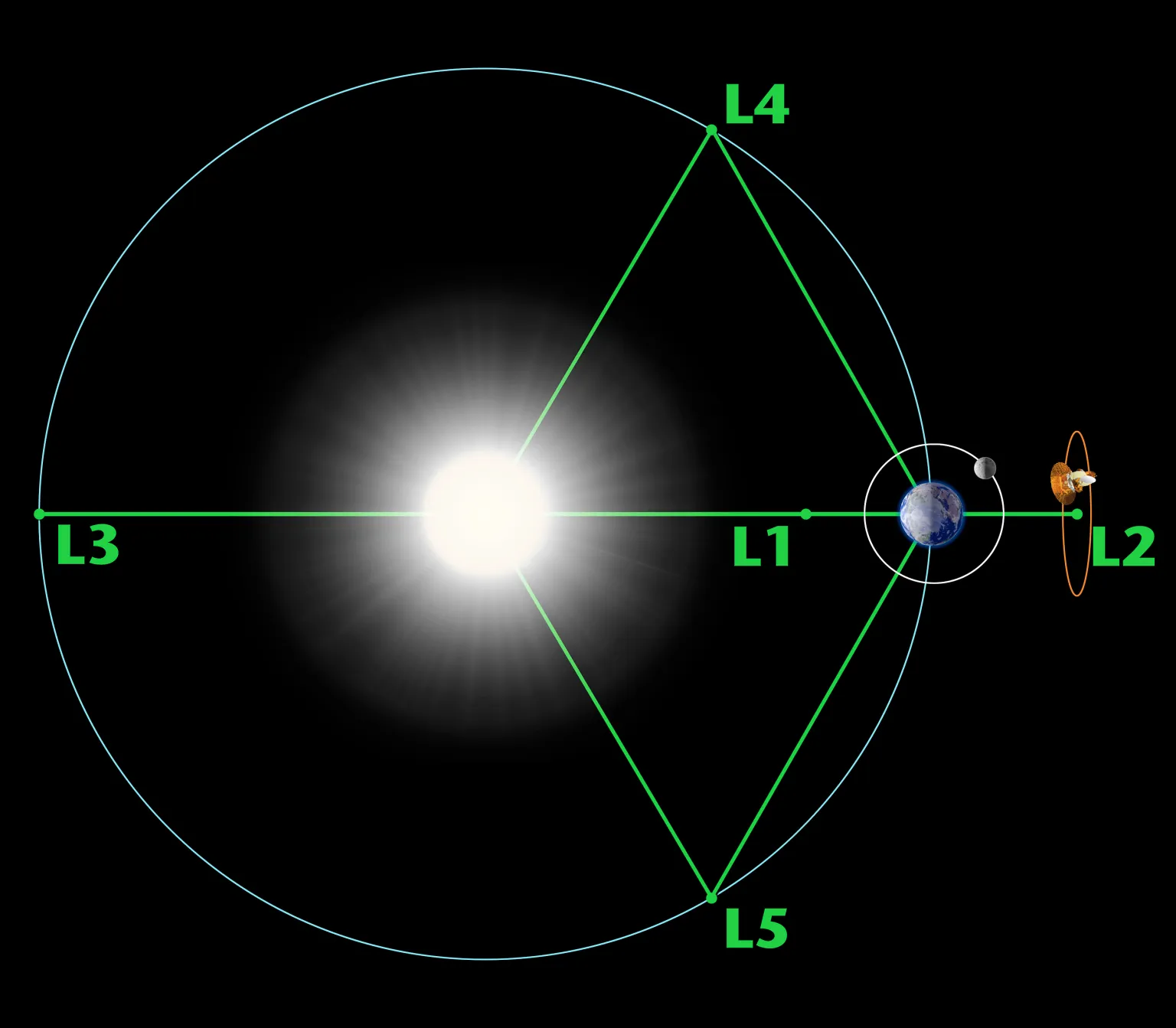Quick pop quiz: how many moons does the Earth have? If you said one, you are correct – but Earth occasionally picks up quasi-moons, which are not gravitationally bound to our planet but share our orbit for a time and are influenced by our gravity during their orbit around the Sun.
But as well as a regular moon and the odd quasi-moon, Earth also has ghost moons. To understand these so-called “moons” – also termed Kordylewski clouds – you need to learn about Lagrange Points, but fortunately these are pretty cool too.
“Lagrange Points are positions in space where the gravitational forces of a two-body system like the Sun and Earth produce enhanced regions of attraction and repulsion,” NASA explains. “These can be used by spacecraft as ‘parking spots’ in space to remain in a fixed position with minimal fuel consumption.”
These regions are not all stable, though even the unstable regions can prove useful.

There are five Lagrange points, but not all of them are stable.
Image credit: NASA.
“Of the five Lagrange points, three are unstable and two are stable. The unstable Lagrange points – labeled L1, L2, and L3 – lie along the line connecting the two large masses,” NASA continues. “The stable Lagrange points – labeled L4 and L5 – form the apex of two equilateral triangles that have the large masses at their vertices. L4 leads the orbit of earth and L5 follows.”
This isn’t an abstract idea, but something we use in practice. The JWST is placed in the L2 Lagrange point between the Earth and the Sun, while the L1 point is used for the Solar and Heliospheric Observatory Satellite, for its uninterrupted view of our star.
Smaller bodies are often found in these stable Lagrange points, with the obvious example being trojan asteroids found in the L4 and L5 points between Jupiter and the Sun.
Lagrange points also occur within the Earth-Moon system, with L4 and L5 also being stable. Though they don’t contain any smaller bodies (that we know of), astronomers have been searching for “ghost moons” in the regions since the 1960s, which are accumulations of dust in the region.
This is not an easy task, as the dust is difficult to detect against the backdrop of skyglow, starlight, zodiacal light, and light from the Milky Way, so it’s no surprise that we didn’t find signs of one for a while. They were tentatively reported by Kazimierz Kordylewski, who gives the clouds one of their names. But the Japanese Hiten space probe, which launched in 1990, did not find any obvious signs of an increase in dust as it passed through the L4 and L5 points between the Earth and the Moon, making discovery seem unlikely.
However, in 2018, one team attempted to model Kordylewski clouds to see how they might best be detected. The team chose to use polarizing filters, which let through only polarized light, knowing that reflected or scattered light is usually polarized. When they looked for the ghost moons at the L5 point, they found light that had been polarized by dust, while the team ruled out other sources of polarization based on the direction of polarization.
“For the first time we have observed and registered polarimetrically the [Kordylewski clouds] around the Lagrange point L5 of the Earth and Moon,” the team wrote in their paper. “By this we corroborated the existence of the KDC first observed photometrically by Kordylewski.”
“The [clouds] may be a transient phenomenon,” they added, “because the L4 and L5 points might be unstable due to perturbations of the Sun, solar wind, and other planets, as many astronomers believe.”
The paper is published in the Monthly Notices of the Royal Astronomical Society.
Source Link: In 2018, Astronomers Spotted A Possible "Ghost Moon" Between The Earth And The Moon